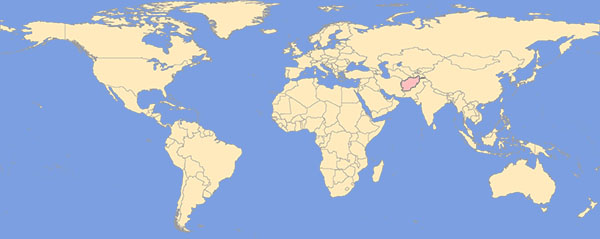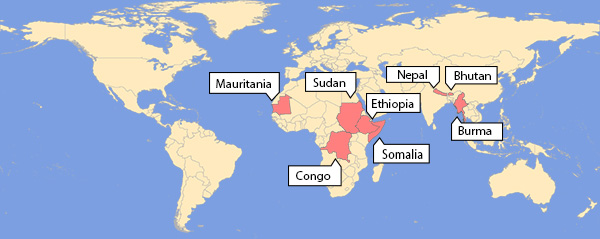Here are some of the food stories of those who have resettled in Syracuse, which includes their knowledge of accessing and cooking food, and how they have become active participants in shaping Central New York’s food system.
Shakiba, from Afghanistan

Shakiba resettled in Syracuse during the mid 2000’s. Through the established refugee network in Syracuse, she was able to access culturally appropriate markets before purchasing a car, allowing her to access these markets herself. She stated that she frequently shops at India Bazaar and Samir’s Imported Goods. Shakiba is involved in the community as a participant of a pop-up food court, My Lucky Tummy, as a chef, and by occasionally cooking for church parties.
Muna, from Iraq

Muna resettled in Syracuse during the mid 2000’s. In 2008, she commented on how there were only a few stores that provided the ingredients she needs, but now there is a rise in Arabic stores that has mostly everything she needs. She cooks regularly and goes food shopping a few times a week. Through her dishes, she uses a wide variety of spices, such as cinnamon, turmeric, curry, and dried lemon. Through the established network of refugees, she was able to have a way to access these markets and get around the city before purchasing a car, where she is now able to access these markets herself. Muna is a participant of My Lucky Tummy as a chef, and is highly supportive of the organization. She stated she frequently shops at Altanoor, India Bazaar, Jerusalem Market, and Samir’s.
Rozlynn’s ESL Class

This ESL class is composed of people from many different nations, including Bhutan, Burma (Myanmar), Ethiopia, the Democratic Republic of Congo, Nepal, Somalia, Mauritania, and Sudan. The number of months/years people who have been in the U.S. ranges from five months to eight years. When we first asked the class what grocery stores they shopped at, almost all of them initially stated they shop at American grocery stores, such as Tops, Sam’s Club, Save-A-Lot, and Wegman’s. One woman from Somalia explained that she mostly cooks pasta and rice, so there is no need to seek alternative markets as American markets have all the foods she need. However, most of the class stated that the CNY Regional Market is their favorite, where they either walk or carpool to get there. A few of the people in the class remarked how it is similar to the markets in their home country, as it is an outdoor market.
Through caseworkers, neighbors (including American neighbors), relatives, and friends, they were able to locate markets and alternative markets that suited them. While there was a general consensus that food items are mostly cheap, vegetables and fruits are sometimes very expensive, particularly when purchasing fruits during winter. The main food staple the class uses is rice, while other notable food items include lentils, various beans, cassava, bitter gourd, pasta, and zucchini. Some dishes mentioned include samosas, dal (lentil soup), chapati bread, and lamb’s quarter. If American stores do not have the items they need, they go to alternative markets that serve their respective regions.
As a result of their farming and gardening backgrounds, most of the class is involved in either a community garden or farm. A majority of the class are participants at the Isabella St Tapestry Garden, a community garden for the growing refugee population in the Northside neighborhood. Some are also active participants at Salt City Harvest Farm.
In order to get a better sense of their impression of American food, we asked the class to name some types of American foods, where they named foods such as pizza, burgers, ice cream, pancakes, and cake. When asked what they thought of American food, many cited fast food restaurants, such as McDonald’s and KFC. They also noted that many of their children have taken a preference to American food in addition to the food of their parents’ culture.